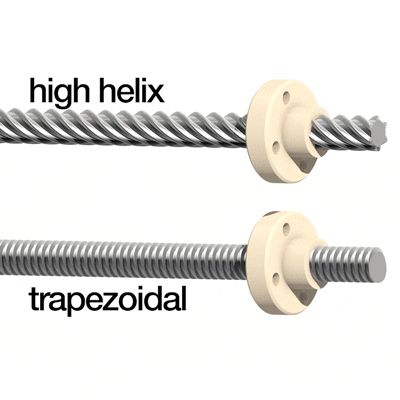Self-locking – what is it?
Zoe Moser | 26. March 2020
If you go into the problem of threads, you often encounter the word “self-locking”. But what does “self-locking” mean exactly in conjunction with lead screw technology? And what are the differences between high helix threads and trapezoidal threads? We have explained it briefly and simply.
Self-locking means that lead screw nuts and lead screws cannot be moved without external force application. It has to do with the pitch and coefficient of friction. Self-locking allows the user to eliminate a costly brake in many applications.
Single-start trapezoidal lead screw drives are self-locking. This means that the flank angle and the sliding friction prevent the nut or lead screw from moving without outside forces being applied. As soon as the static friction is exceeded, the components are no longer self-locking. Multistart trapezoidal screw drives have a “residual self-locking” feature; high helix screw drives have no self-locking feature.
To illustrate this, let’s take an example:

Here, you can see clearly that the pitch of the single-pitch trapezoidal lead screw is less than that of the high helix lead screw. The coefficient of friction of the two lead screw nuts is identical to those of the stainless steel lead screws. As described above, the lower pitch means that the lead screw nut cannot move without external help.
And finally, the effect of self-locking can also be influenced. The coefficient of friction, for instance, depends on correct determination of material combination, surface finish, lubrication, self-lubricating substances, etc. Axial load and external influences also play a role.
Therefore, the use of the correct lead screw drive always depends on the individual application. Our experts will of course be happy to advise you in detail: to the contact form.


Ruben Fabriek
What is the pitch and angle used in the self locking screw?